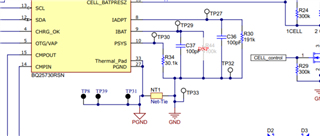Other Parts Discussed in Thread: BQ25731,
Hello,
In evaluating this part I have not been able to understand the logic behind the input current limit function (IIN_DPM / IIN_HOST). Input current sensing and limiting is described in the datasheet in terms of a register which does not exist in the register descriptions, nor anywhere I can find on Google (EN_FAST_5MOHM). The BQ25731 datasheet also seems to have the same issue.
The part supports a charge current up to 16A, so I am confused as to why the input current sense's maximum clamp is 10A, as there is no other source of charge current, and the DPM loop maximum current is similarly limited. I intend to disable the input current regulation loop and rely only on VSYS regulation in order to overcome this limit while using a 5mOhm resistor in order to ensure a large enough signal for the inductor current regulation loop. However it would help if the datasheet was rewritten a little to make this design decision clear and remove reference to this missing register.
I would appreciate it if someone could confirm my understanding is correct, and that the part will behave as expected.
Thank you.


